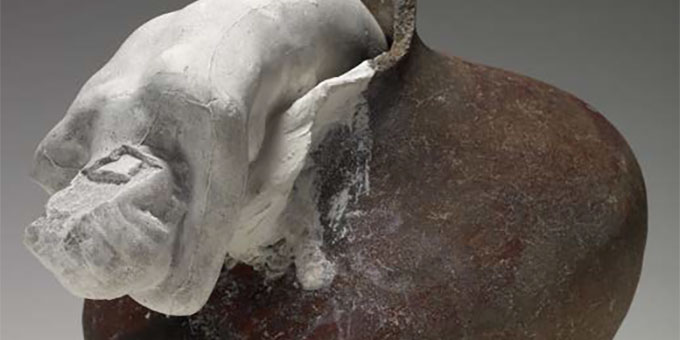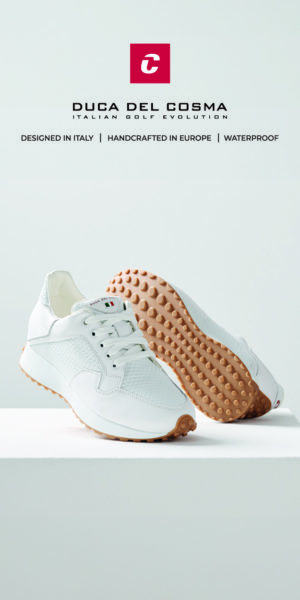Posted on March 8, 2017 in Arts & culture.
Rodin, the centenary exhibition at the Grand Palais from March 22 to July 31, 2017
On the occasion of the centenary of the death of Auguste Rodin (1840-1917), the Rodin Museum and the Reunion of National Museums Grand Palais join forces to celebrate the artist. The exhibition highlights Rodin's creative universe, his relationships with the public and the way in which sculptors appropriated his aesthetics. Rich with more than 200 works by Rodin, it also includes sculptures and drawings by Bourdelle, Brancusi, Picasso, Matisse, Giacometti, Beuys, Baselitz, Gormley ... and renews the gaze on this giant of sculpture.

Auguste Rodin, Female nude leaning out of an antique globular vase, 1895-1910, plaster and terracotta; 17,7 x 17,8 x 23,8 cm, Paris, Rodin Museum. Rodin donation, 1916, © Rodin Museum (photo Christian Baraja)
Rodin, like Monet, knew and still knows a world celebrity. Each generation has fascinated the public. Many artists have measured themselves against its aesthetic, taking inspiration from it or taking the opposite view. Rodin explores all facets of sculpture: from assembly to partial figure, including collage, practices taken up by Matisse and Picasso. His use of drawing precedes the great Germanic expressionists, his relationship to photography announces those of Brancusi or Moore. The exhibition presents her work and the mutations in the gaze it has generated.
Rodin, the force of expression
From the 1880s, Rodin was hailed as the one who brought sculpture to life: “from conventional, sculpture became expressive”. The body provides the vocabulary of human passions, a Rodinian expressionism is essential. It is also the period of “black drawings” - little known, little seen - which nourish the universe of its future Door to Hell.
Collectors stand up for him. He himself knew, from this time, playing with all the means at his disposal to build his career: collectors, press, exhibitions, in a Paris, where the art market is booming, to build his career.
Young sculptors like Bourdelle, Lehmbruck, Gaudier-Brzeska, Brancusi, all have a Rodinian period.
Rodin experimenter
The exhibition of his work, which Rodin organized in Paris in 1900 on the sidelines of the Universal Exhibition, placed him at the forefront of the artistic scene. There he shows an unprecedented aspect of his work through a series of plaster works - his favorite material: immaculate material made for this art of light and space. The 1900 exhibition reveals a process of permanent, fundamentally experimental reinvention. The artist sometimes assembles incongruous elements, proceeds by repetition, fragments shapes, rethinks the insertion of sculptures in space.
The success encountered implies a multiplication of versions, all different, the sculptor making his thought evolve at each stage. Bourdelle, Matisse, Brancusi or Picasso anchored their first works in his practice.
At the end of the 1890s, Rodin devoted himself more to drawing. In 1902, he exhibited in Prague an important series, which is partially reconstructed at the Grand Palace. This completely independent production of sculpture upsets the freedom and modernity of this new expression.
Rodin used photography extensively from the 1880s. The retouched prints by the artist became works in their own right and were used and integrated into the creative process. After 1945, artists like Henry Moore brought this use of photography to a climax.
Rodin: the shock wave
After the Second World War, we discover a new Rodin and many unknown aspects of his work: assemblages of plaster figures and ancient vases, dance movements, molding of Balzac's dressing gown are as much a shock to the public as for the avant-garde. Picasso's assemblages, Max Beckmann's acrobats and Beuys' felt works echo it. Rodin's collectors bequeath numerous collections to museums: the Rodin Museum in Philadelphia, the Metropolitan Museum in New York, the National Gallery in Washington, the Ny Carlsberg Glyptothek in Copenhagen, the Western Art Museum in Tokyo… An exhibition hall evokes the universe of a collector of today, in which the works of Rodin mix with those of his contemporaries.
What remains of this expressive and lyrical sensitivity? It appears in various works or movements which share the rejection of geometry and idealism, the demand for a libertarian and anti-rationalist approach. This sensitivity opposes spontaneity to the concept and affirms the weight of materiality (Germaine Richier, Alberto Giacometti, Willem De Kooning). There is excess, in the drama (Markus Lüpetz) as in the jubilant side (Barry Flanagan): violence and overflow, playful spirit or metamorphosis.
Pratical information
general police station: Catherine Chevillot, general heritage curator, director of the Rodin museum; Antoinette Le Normand-Romain, Honorary General Curator of Heritage; Sophie Biass-Fabiani, heritage curator at the Rodin museum; Hélène Marraud, conservation attaché, in charge of sculptures at the Rodin museum; Véronique Mattiussi, scientific manager of the historical collection at the Rodin museum; Hélène Pinet, head of the research department, responsible for the photographic collection of the Rodin museum scenography: Didier Blin, architect-scenographer
opening : Sundays, Mondays and Thursdays from 10 a.m. to 20 p.m. Wednesdays, Fridays and Saturdays from 10 a.m. to 22 p.m. Closed every Tuesday.
closing Monday May 1 and Friday July 14
European Museum Night on May 20, 2017.
prices : € 13, € 9 TR (16-25 years old, job seekers, large families). Free for children under 16, beneficiaries of the RSA and the minimum retirement age. € 35 tribe rate (4 people including 2 young people 16-25 years old). reduced rate at the Rodin museum upon presentation of the exhibition ticket
access: metro line 1 and 13 "Champs-Elysées-Clemenceau" or line 9 "Franklin D. Roosevelt"
information and reservations: www.grandpalais.fr et www.rodin100.org
Drawing Now Art Fair: Tatiana Wolska winner 2024
The invention of language by Gertrude Stein and Pablo Picasso
The history of French women's golf at Golf du Sorbier








